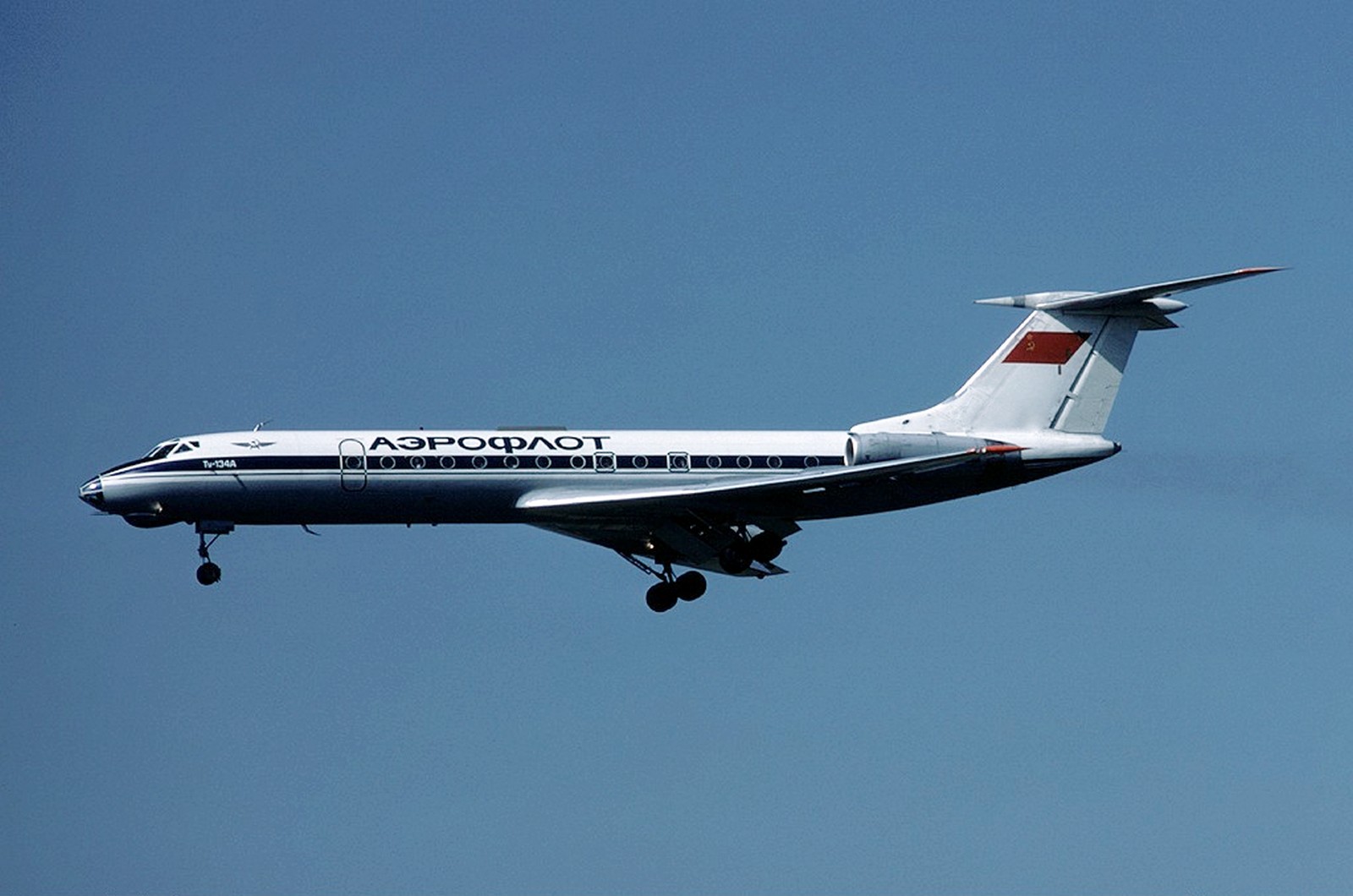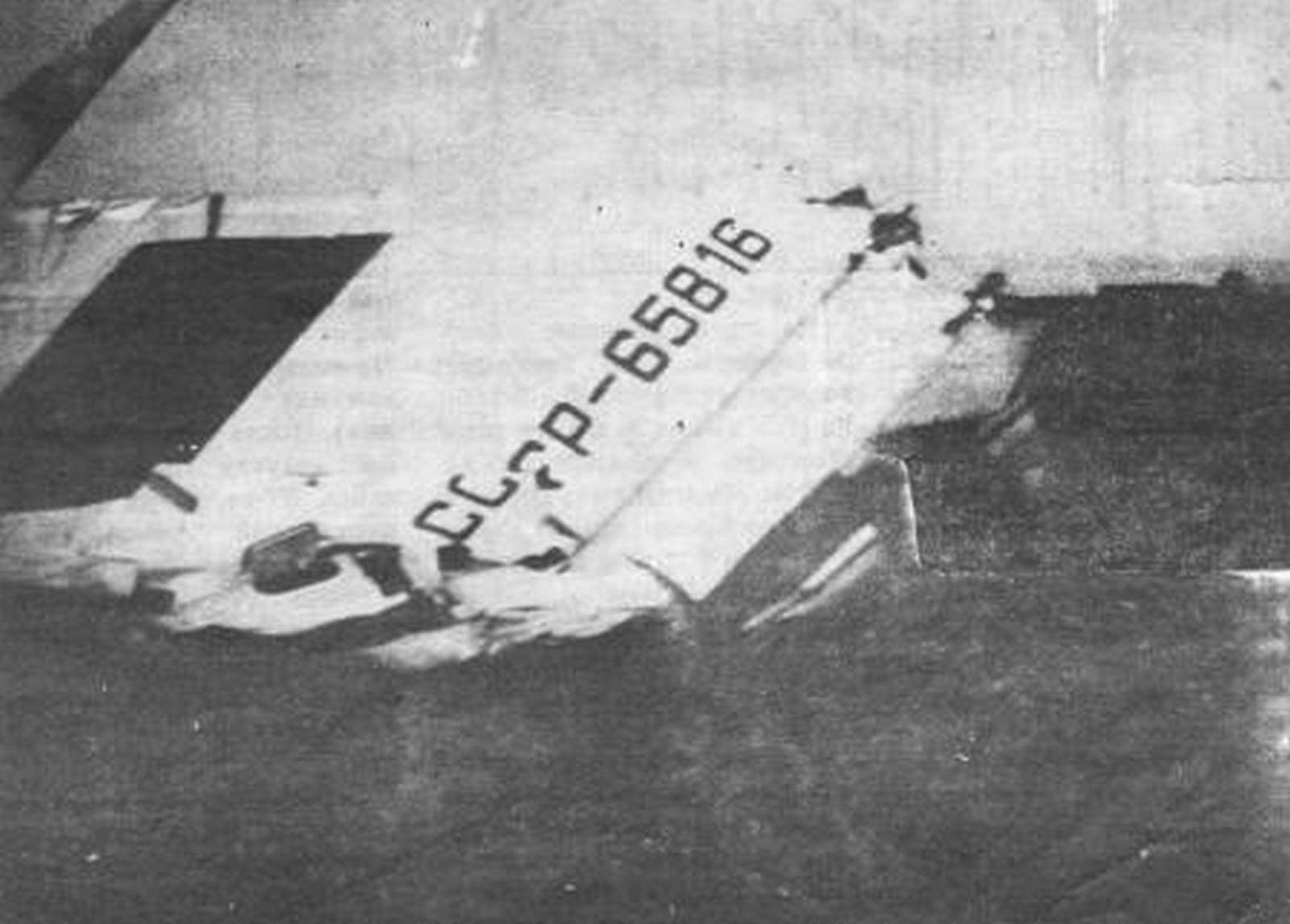Collision of Two Tu-134s over Ukraine: A Tragedy Shrouded in Myths

On August 11, it was 55 years since the collision of two Tu-134 aircraft over the Dnipropetrovsk region, resulting in the deaths of 178 people. This disaster remained the deadliest in the skies of Ukraine until Russian terrorists shot down the Malaysian Boeing 777 over Donetsk in July 2014.
On that day in 1979, the Tu-134A of the Chisinau Aviation Squadron (flight number USSR-65816) was operating flight SU-7628 on the route Chelyabinsk-Voronezh-Chisinau. On board were 6 crew members and 88 passengers, including 24 children. The other aircraft was the Tu-134AK of the Minsk Aviation Squadron (flight number USSR-65735, a former government "salon" converted into a regular passenger plane with 78 seats). It was operating flight SU-7880 on the route Tashkent-Guryev-Donetsk-Minsk. On board were 7 crew members and 77 passengers, including 12 children, as well as 17 football players and staff from the Tashkent team "Pakhtakor," who were flying to Minsk for a match against the local "Dynamo."
The Kharkiv Air Traffic Control Center was responsible for the safety of flights. The shift supervisor, Sergey Sergeyev, assigned the busy Southwestern Sector to 21-year-old Nikolai Zhukovsky, who was just starting his career. He was supposed to be monitored by the more experienced Vladimir Sumsky. Zhukovsky made several mistakes, resulting in both Tu-134s being at the same altitude of 8,400 meters on courses intersecting almost at a right angle.
Sumsky noticed the impending catastrophic situation on the radar. At 13:34, he ordered the Belarusian crew to ascend to 9,000 meters and warned them that there was an oncoming aircraft at 8,400 meters. However, he did not receive a response, scolded the incompetent Zhukovsky, and returned to his workstation as he had to manage three more aircraft. The Minsk crew either did not understand the command or did not hear it at all, so they remained at the same level. Due to thick clouds, the crews could not see each other.
One minute and five seconds later, the Belarusian aircraft collided with the Moldovan one. The tip of its right wing cut through the upper part of the opposing crew's cockpit, instantly killing the pilots. It lost part of its wing, the debris of which entered the right engine. The impact turned the planes around, and they collided again, this time with their tails. The Belarusian aircraft lost its tail, and the Moldovan one lost its right wing half, after which it broke into several pieces. The Minsk crew tried to control their hopelessly damaged plane, but at an altitude of about 4,000 meters, it went into an uncontrolled dive and crashed to the ground at around 13:38. The tragedy occurred near Dniprodzerzhynsk (now Kamianske), and the wreckage was scattered over a large area of 16 by 3 kilometers. All passengers and crew members perished.
One player from "Pakhtakor" survived because he missed the flight. The head coach Oleg Bazilevich, who had trained Kyiv's "Dynamo" together with Valery Lobanovsky until 1976, was also fortunate. The day before, he flew to his family in Sochi and was supposed to independently travel to Minsk.
Zhukovsky and Sumsky were found responsible for the disaster. The court sentenced both to 15 years in a general regime colony. The first served his term in full (although there were rumors that he committed suicide), while the second was released after six and a half years for good behavior.
In the Soviet Union, air disasters were kept so secret that usually, even rumors barely spread. However, due to the death of a top league football team, the rumors quickly spread across the country. Nevertheless, the national media remained silent. It wasn't until August 18 that the newspaper "Sovetsky Sport" published a small mourning notice on the last page. Its first paragraph stated (in the original language): "Tashkent. August 17 (TASS). Today, thousands of residents of Uzbekistan saw off in their last journey the football players of the Pakhtakor team, who died in a plane crash." There was not a single word about the plane crash itself, in which, besides the 17 Pakhtakor players, 36 children also died.
Due to the longstanding secrecy, various "folk" versions of that disaster still circulate. One persistent myth is that the planes were shot down by air defense missiles. Allegedly, a plane carrying General Secretary Brezhnev was flying in the area at the same time, so the generals gave the order to shoot down the regular Tu-134s for his safety. Indeed, a "special" aircraft flew over Dniprodzerzhynsk that day, but there were no high-ranking officials on board, and it passed long before the tragedy occurred. Among the supporters of the shoot-down theory was also Oleg Bazilevich, though he believed it happened because the planes flew over a secret facility. Modern researchers have had the opportunity to study the documents from the disaster investigation and found no evidence supporting the "missile" version.

 Fan-page
Fan-page Youtube
Youtube TikTok
TikTok Aviamuseum
Aviamuseum State Aviation Museum
State Aviation Museum

